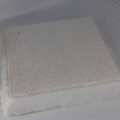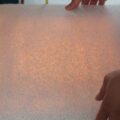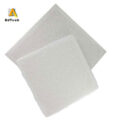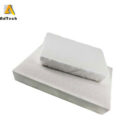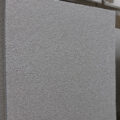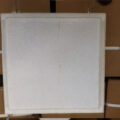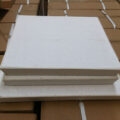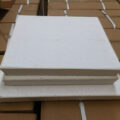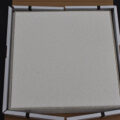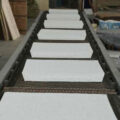Firing of metal foundry ceramic foam filters generally occurs above the temperature at which the glass phase of the material can be formed and combined, resulting in the required strength and corrosion resistance characteristics in the final product. Firing is usually carried out in a continuous kiln at temperatures above 1100 ° C for 1-3 hours, and the peak temperature is maintained for 15 minutes to 1 hour. Lower temperatures and shorter durations improve production efficiency. However, sufficient time and temperature must be provided to achieve the required strength and corrosion resistance of the material.
The pore size of metal foundry ceramic filters is primarily determined by the initial pore size of the polymer foam used in the process. For efficient filtration of aluminum alloy, typical primary pore sizes are 10 to 70 pores per linear inch. However, each application requires a unique pore size, which depends on the required filtration efficiency and the required filtration permeability in the foundry. The pore size is often referred to as the number of holes in a linear dimension, such as the number of holes per inch. The higher the PPI value, the smaller the cell diameter.
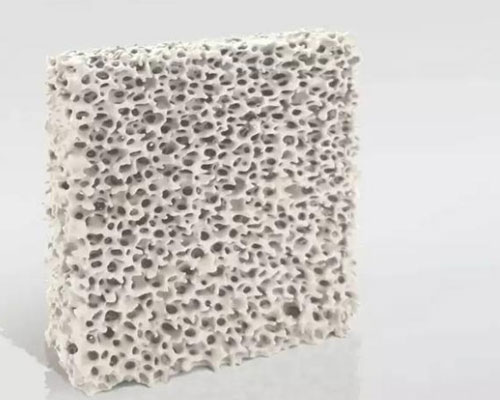
The open cell ceramic foam filter used in aluminum smelters was developed in the early 1970s, and in 1974 this technology was first applied on an industrial scale for the production of rolled ingots for the production of wafers and wafers. Ceramic foam filters are integral, disposable or disposable filters used for single casting.
The CFF filter pore size is 4 to 28 holes per centimeter (10 to 70 holes per linear inch), and the corresponding pore size is approximately 0.036 to 0.26 cm. Ceramic foam filters usually have a square size of 22.86 cm × 22. 86 cm x 5.08 cm (9 “x 9” x 2 “) to 66.04 cm x 66.04 cm x 5.08 cm (26” x 26 “x 2”) for filter box.
A fibrous paper pad is attached to the edge of the filter plate to create a lateral compressive load to hold the filter in place in the filter bowl and prevent metal from bypassing the edge of the filter. The fibrous backing material typically has a thickness of about 0.317 cm to 0.476 cm (1/8 to 3/16 inch) and is usually composed of silicate fibers. Vermiculite is usually added to the gasket material, which expands when heated, increasing the gasket pressure.

